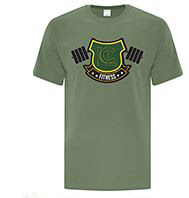When looking at teaching any new skill you need to have the ability to observe and analyze the participant. This is particularly important when teaching physical skills, and especially those with weighted movements. Improper form and technique is an easy way to injure yourself and decrease your ability to sustain activity over a period of time. When performing movements we always want to execute them as technically proficient as we can. As a a coach or trainer being able to spot why a movement does not look right and formulate a method of fixing it can be a difficult task. Here are a few things that might help:
1. Know it! Above all else, before you try and teach someone else to do something, know what you are doing and what you are talking about. You will do more damage to that athlete if you send them away with misinformation or even worse habits because you were not brave enough to say you didn't know the answer. Everyone doesn't know everything, but when these situations arise it is a good time to take note, research, practice, execute and then get back to the person. In the end they will be more thankful for your honesty than for the problems you may create for them.
2. Don't Stand Still. As a movement coach, you should be doing just that....moving. Do not watch from only one vantage point. Rotating around the athlete while they perform a movement allows you to see them from every angle. You will have an accurate picture of what they are doing from every possible position. Don't be afraid to stand closer and farther away. Sometimes seeing the big picture is all you need.
3. Basic to Complex. Start with macro (large) movements and work your way down to micro movements. Determining if the lift has large fundamental errors will allow the movement to look as close to proper as you can get it without refining imbalances or poor flexibility issues. If the movement doesn't look close to right, don't worry about the little things. Once those big things have been taken care of you can start looking at increasing the smaller proficiencies and technicalities, as that is what they are technicalities. These can be cleaned up overtime.
4. Info. Overload Many times, it is easy to get ahead of yourself and focus on everything a person is doing wrong. Fixing a movement is a step by step process that cannot be rushed. Focus on fixing one thing at a time! Do not overload them with multiple amounts of information. Make it as simple as possible. When that one thing is fixed, you can look at another, but try not to fix more than 2-3 things at most in a session. All this will do is cause them to forget what they fixed in the first place and then your back at square one. Think of it as an analogy of building a house. Lay foundation and let it cure and get nice and firm. Build the framework, etc. etc. You can't do the next step until the prior is done....totally done.
5. Ask for help. Don't be afraid to step back and not know why it won't fix. You may know what the problem is and what the general fix is, but every athlete is different. Communication of what to do sometimes needs to be tweaked so the individual can grasp the concept of what you are trying to get them to do. Bringing in a second set of eyes (when possible) to observe and offer some feedback may be just what you need. Again, you will not lose credibility, but gain more credibility and build your coaching teams credibility at the same time.
Monday
21 - 1 Push Up 1 - 21 Sit Up Ladder for time
Do 21 PU/1SU, 20 PU/2SU, 19 PU/3 SU
Tuesday
"Helen"
400 meter run
21 KBS Guys @ 55 Gals @ 35
12 Pull Ups
Wednesday
Front Squat 5-4-3-2-1-AMRAP 50% of 1 RM
Rest 3 min.
50 Box Bounds for time
Thursday
21 - 15 - 9 (Let's get upside down)
Handstand Push Ups
Burpees
Friday
Hang Power Clean 5-4-3-2-1
Learn Snatch (for real this time!!!)








